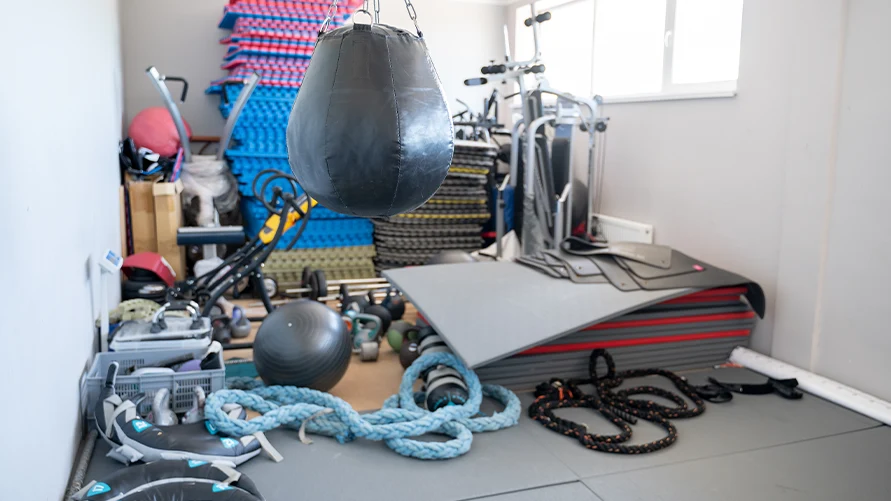Dreaming about starting a gym, your own space filled with high-energy workouts, a steady stream of clients, and a passion for fitness fuelling the whole thing?
It’s an exciting prospect, but it raises an immediate question: What sort of gym do you open? Franchise or independent? What’s the right gym business model to select?
The independent route allows you to stamp your own ideas and personality on it. Maybe even do something that serves a new niche. For example, in New Orleans, there’s a gym designed specifically for people with disabilities. So, doing something totally new obviously suggests going the independent route.
However, creating your own brand may not be what motivates you. Perhaps getting a more predictable stream of income with less pioneering work is more what you had in mind?
Let’s take a deep dive into different types of gyms, starting with which gym business model could deliver quicker returns.
The franchise dream: Instant recognition, but at what cost?
You have seen them everywhere, those bright neon logos you can spot from across a parking lot. Franchise gyms have an unmistakable pull. Planet Fitness, Gold’s Gym, F45. Why? Because they spend big on marketing. Planet Fitness alone pumps a staggering quarter of a billion dollars annually into getting its name in front of you, sponsoring the New Year’s Eve ball drop, anyone?
This recognition is one of the biggest selling points of a franchise. If you are going to open a gym franchise, you are not just starting a gym; you are buying into a brand that’s already established in people’s minds. You’ll have customers walking in on day one because they already know who you are. Add to that the pre-packaged systems and processes “business in a box,” as they say, and it starts to look like a pretty good deal.
But here’s the catch: it’s expensive and restrictive, and it’s not the golden ticket to passive income, many assume.
Let’s break it down. First, the investment. Whether it’s a more budget-friendly Jazzercise at $2,000 or a behemoth like Planet Fitness, which can set you back almost $5 million, the start-up costs are hefty. And it doesn’t stop there. Monthly royalties, renovation requirements, and marketing fees all nibble away at your profits, month after month, year after year. You are paying for the brand, but the brand isn’t paying you.
Take F45, for example. You’ll need around $315,000 to get started, and even then, after three years of grinding, the average revenue of an F45 gym sits at $360,000 annually, with only 30% margins at best. It would take four to six years to see a return on that initial investment.
And freedom? Forget about it. Franchises come with rules, procedures, marketing campaigns, and strict adherence to a consistent image. There’s very little room to innovate or change course. You are not steering the ship. You are simply the captain of someone else’s vessel.
The independent route: lower costs, higher potential
Now, let’s talk about the other side of the fence: independent gyms. These are your own from the ground up. Your name, your brand, your vision. For some, that’s terrifying; for others, it’s exhilarating.
The major perk? Low startup costs. Depending on location and scope, you can get an independent gym off the ground for as little as $20,000 to $40,000. No royalties, no mandatory remodels, no corporate handcuffs. You’re free to build and grow your business as you see fit, keeping more of your hard-earned cash in your pocket.
And because you’re the one calling the shots, the potential for higher profit margins is much greater. Sure, there’s no brand recognition at the start, but that’s where your creativity and hustle come in. You don’t need Planet Fitness’s billions to get noticed. You need a strong gym marketing strategy, a unique selling point, and offers that speak directly to your community.
The downside? It’s not a ‘business in a box.’ Everything, from staff training to marketing, falls on your shoulders. You are building from scratch, which can be daunting. But if you are willing to put in the work, the payoff can be sweet and much faster than you’d think.
Take this example: an independent gym that opens with a well-planned pre-launch campaign. With just $25,000 spent on marketing in the first 90 days, you could add 205 members at $599 each. That’s $122,795 in cash before you even open the doors. You’ve paid off your initial investment within three months and started building recurring revenue. Quick, efficient, and profitable.
The choice is yours
Now, let’s stack these two side by side.
- Franchise Gyms: Large upfront costs, lower profit margins, and a longer payback period (we’re talking years). But you get instant brand recognition and a business model handed to you on a silver platter.
- Independent Gyms: Lower costs, higher profit potential, and the freedom to run things your way. But it’s all on you to make it work, and that can feel like you’re pushing weights uphill, especially in the early stages.
The real question is: what matters more to you? Speed or safety? Structure or freedom?
Like developing your own body, developing a business means looking inward; you have to understand your inner motivations if you’re going to be a successful gym business. Whichever gym type you choose, we wish you the best of luck.





